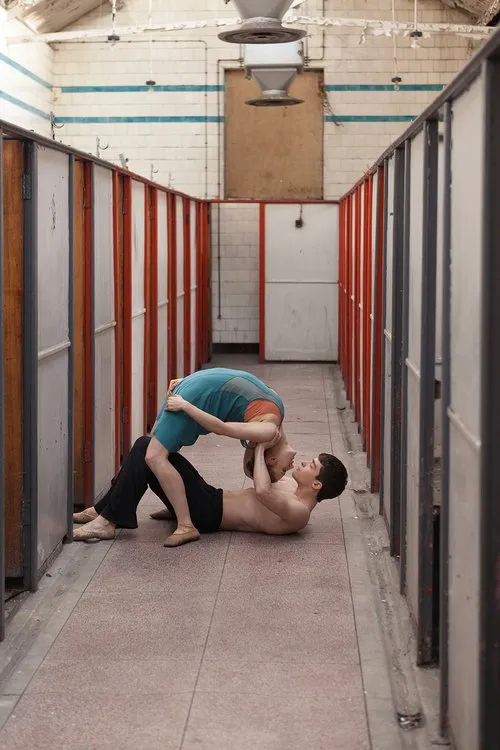Maze

Plot
In the heart of Glasgow, a city bustling with life, lies a forgotten relic - the Govanhill Baths. Once a thriving hub of community and swimming culture, the baths have fallen into disrepair. Their majestic, maze-like corridors and cavernous swimming pools now echo with the silence of abandonment. But it's within these walls, in this labyrinthine setting, that two young souls discover each other. The film opens with glimpses of the city outside, its vibrant sounds and colours muted as we're transported into the decaying baths. As we delve deeper, we find ourselves in the midst of young dancers, preparing to bring the baths back to life. They're not just any dancers, but a troupe of fierce, energetic young performers from the Scottish Dance Theatre. The film's choreographer and director, Fleur Darkin, has woven a narrative that's as much about the dancers as it is about the setting. The camera pans across the empty pools, its lens reflecting the dancers' movements in the still water. We see flashes of their training, their laughter, and their intensity. They're a group of young people, united by a shared passion for dance, and yet, each one has their own distinct energy and style. This isn't just a film about dance; it's about community, friendship, and the power of movement to transcend even the most mundane settings. As the performance reaches its crescendo, we're introduced to two dancers in particular: Emma and Jamie. They're both part of the ensemble, but they're also individuals with their own stories and struggles. Emma, with her striking movements and fierce spirit, seems to embody the very essence of the dance itself. Jamie, on the other hand, is quieter, more introspective, but no less captivating. Their paths converge in the labyrinthine corridors of the baths, where they stumble upon each other in this vast, empty space. The tension between them is palpable, a sense of mutual attraction that's hard to ignore. As they dance together, their movements become increasingly fluid, their connection growing stronger with each passing moment. Fleur Darkin's choreography is inventive and dynamic, using the maze-like corridors of the baths as a backdrop for the dancers' movements. The pool itself becomes a character, its water rippling and shimmering in time with the dancers' steps. We see scenes of solo dancing, where the individual dancers are free to express themselves without constraint. We see them interacting with each other, their bodies weaving in and out of the empty spaces, creating a dance that's both a product of the individual and the collective. One of the most striking aspects of the film is its use of sound. The score is a fusion of electronic and acoustic beats, pulsating to the rhythm of the dancers' movements. As the performance reaches its climax, the sound becomes a maelstrom of energy, driving the dancers to new heights of intensity and passion. Throughout the film, there are moments of quiet beauty, too. A solo dance by Emma, set against the soft glow of the baths' windows, is a poignant moment of introspection and self-discovery. The camera captures the dancers' faces, their eyes closed, their bodies open, as they surrender to the music and the movement. As the performance comes to an end, the dancers, Emma, and Jamie, all come together, their bodies entwined, their movements a fusion of individuality and unity. The camera pans out, and we're left with a final, beautiful image: the maze-like corridors of the baths, empty once more, but alive with the memory of the dance. Maze is a film that's as much about the power of dance to transform and transcend as it is about the relationships between the dancers themselves. It's a testament to the beauty and diversity of movement, and the ways in which it can bring people together. As we leave the Govanhill Baths, we're left with a sense of wonder, a sense of awe, and a deeper appreciation for the art form that's brought this place to life.
Reviews
Recommendations


